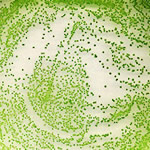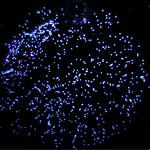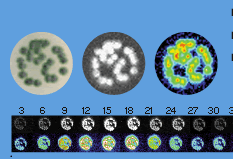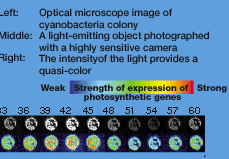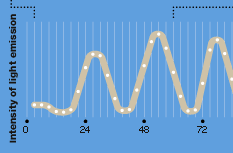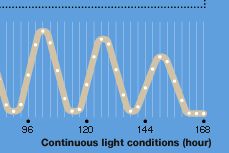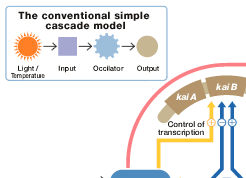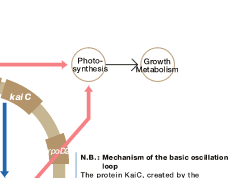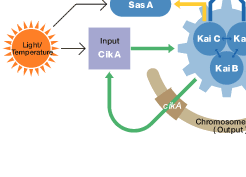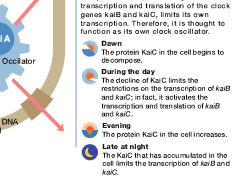| Research: Index > The evolution and development of mind appeared from an examination of people, apes, and robots |
| Time in living creatures Bacteria that measure time |
|
|
|
| Many living creatures have an internal clock operating on roughly one-day cycles to respond to environmental changes caused by the quotidian cycle. The photosynthesis in single-celled cyanobacteria begins in the morning, increases during the day, and wanes at night. Studying the photosynthesis function with the luminous reporter method, this rhythm (circadian rhythm) is maintained during conditions of continuous light with no change between day and night. The biological clock functions autonomously. An interesting aspect of the biological clock is the grand common rhythm created by all living creatures on the earth by the interaction between cells, between individual organisms, and between groups of creatures. Among those creatures observed to have a circadian rhythm, cyanobacteria are thought to have a primitive clock. Research centered on the clock gene clusters kaiA, kaiB, and kaiC is tracing the evolution of the biological clock. |
|
|||||
|
||||||
| The multiple loop model of the cyanobacteria circadian rhythm A complex mechanism within a single cell |
| In the cyanobacteria biological clock, the periodic expression of the clock gene clusters kaiA, kaiB, and kaiC creates a basic rhythm (blue arrow and N.B.). The protein kaiC is linked to the histidine kinase SasA and periodically regulates its activity, regulates the expression of the genes kaiB and kaiC, and stabilizes the rhythm (yellow arrow). Also, the oscillator regulates the expression of the light input system factor (green arrow). While this alone is complex, recent analysis of cyanobacteria has revealed further feedback processes incorporated in the basic rhythm created by kaiA, kaiB, and kaiC. KaiC has an effect on the superorganization of chromosome DNA while periodically working in tandem with kaiA and kaiB. It controls photosynthesis, growth, and metabolism--most of the bioactive rhythms (pink arrow). To understand the circadian rhythms of all living creatures in addition to those of cyanobacteria, an understanding of the networks comprised of multiple genes and proteins is essential. It is also an important element of clock research. |
|
||||
|
|
||
|
|
The evolution and development of mind appeared from an examination of people, apes, and robots: Shoji Itakura | ||
| Rsearch |
|
Please close a window with the button of a browser who are turning off Javascript. |
